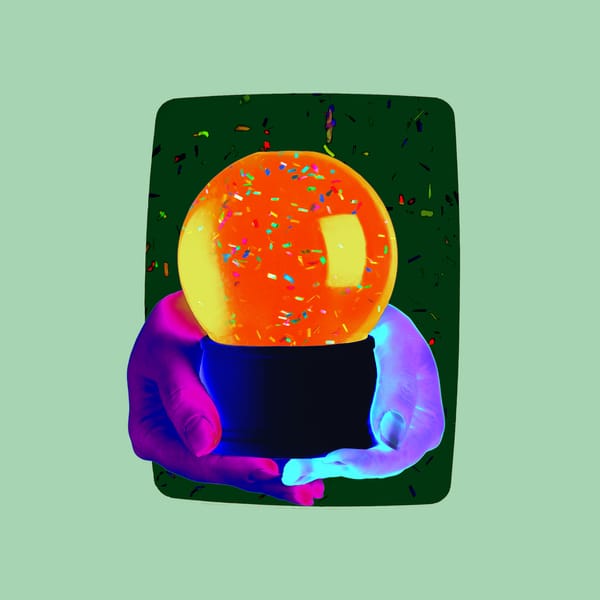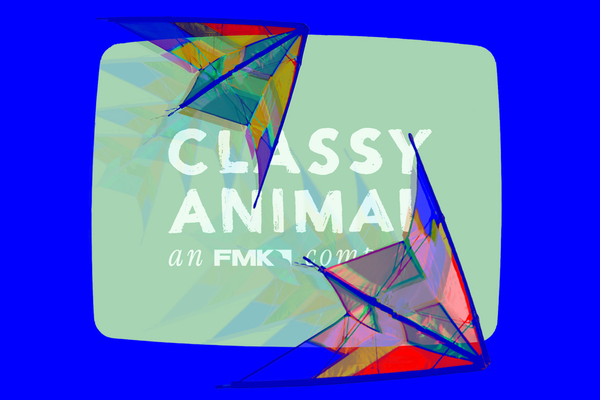It’s 9:10 PM in Kansas City. There’s another “record-breaking” cold front rolling in (because apparently The Day After Tomorrow is now a documentary), and I’ve got about 47 minutes before one of my boys wakes up needing water. But I can’t let this year in marketing pass without getting my thoughts down.
Because 2024? It got weird—in the best way possible. Marketing tech wasn’t just a tool this year; it became a playground. Rules got rewritten, boundaries got blurred, and, somehow, weirdness became the strategy that worked. Let’s dive in.
The Great Privacy Paradox: Less Became More
You remember the panic, right? Early 2024, Chrome finally killed off third-party cookies. Marketing departments everywhere braced for an apocalypse. Except… it never came.

Instead, something unexpected happened: first-party data had its big moment. We stopped stalking our customers and started actually talking to them. For brands that leaned into this privacy-first approach, the rewards were real. According to Forrester, companies embracing first-party data saw a 23% increase in customer trust—and trust, as it turns out, is ridiculously profitable.
Sure, we had hiccups (remember when everyone thought chatbots were going to save us from the cookiepocalypse? Big yikes). But the lesson? Respecting your audience is good business. Who knew?
AI: The Weird Friend Who Finally Found Its Groove
If you’d told me a year ago that AI would be our new creative MVP, I would’ve rolled my eyes. But here we are. In 2024, AI wasn’t just a buzzword—it became useful. Not in a “replace all your humans” way, but in a “make humans better at being human” kind of way.
Take HubSpot’s AI content tools, which, according to HubSpot’s State of Marketing Automation Report, helped companies see a 47% increase in engagement. Why? Because AI freed up teams to focus on the good stuff—strategic ideas, bold campaigns, and the kind of storytelling that algorithms can’t replicate.
As Sarah Jones from MIT Technology Review put it: “The best AI isn’t the one that replaces us—it’s the one that enhances us.”
WordPress: The Comeback Kid
Oh, WordPress. For years, people have been calling it outdated, clunky, even dead. And yet, in 2024, it didn’t just survive—it thrived. The Gutenberg editor finally hit its stride, empowering even junior developers to build gorgeous, functional sites in hours instead of weeks.
Meanwhile, so-called “WordPress killers” like headless CMS platforms are growing, but WordPress still powers 43% of the web, according to Kinsta’s CMS Usage Stats. Its flexibility and reliability continue to make it the go-to choice for brands that want creative freedom without breaking the bank.
Fractional Teams: The New Flex
Speaking of change, let’s talk about how “fractional everything” went mainstream this year. Fractional CMOs, part-time CTOs, weekend CEOs—you name it. The gig economy finally met the C-suite, and it worked.

According to Harvard Business Review, companies using fractional teams saw a 34% boost in innovation output. Why? Because fresh perspectives drive creativity, and the “old way” of doing things (full-time, in-house, siloed) just isn’t cutting it anymore.
Websites Became Wonderlands
If your website still feels like a corporate DMV, 2024 wasn’t your year. This was the year brands turned their digital experiences into something unforgettable. Think mini-games, immersive storytelling, and interfaces that felt more like a TikTok fever dream than a PowerPoint slide.
Figma’s “Config 2024” conference site was a perfect example. They gamified their registration process and saw signups skyrocket by 312%, according to Figma’s Case Study. The takeaway? Play works. People want to be entertained, even in professional spaces.
Weird Became Wonderful
Here’s my favorite plot twist of the year: The most successful campaigns weren’t the biggest or the safest—they were the weirdest. Duolingo’s unhinged green owl became a cultural icon. LinkedIn, of all platforms, started dabbling in memes (bless their awkward hearts). Even corporate giants started loosening their ties and getting weird with it.
As design legend Stefan Sagmeister said in Fast Company, “Best practices are where creativity goes to die.” The brands that thrived in 2024 were the ones that broke rules—and had fun doing it.
Looking Ahead to 2025
So, what’s next? If 2024 taught us anything, it’s that marketing thrives when we embrace chaos. The most exciting brands in 2025 won’t be the ones with perfect strategies or flawless data pipelines. They’ll be the ones that take risks, stay curious, and lean into the unexpected.

Want a case study on how to embrace the weird and make it work? Check out our work with AndDone—it’s proof that creativity and bold thinking can turn big ideas into big results.
Here’s to the year ahead. May your campaigns be strange, your strategies bold, and your coffee strong.










